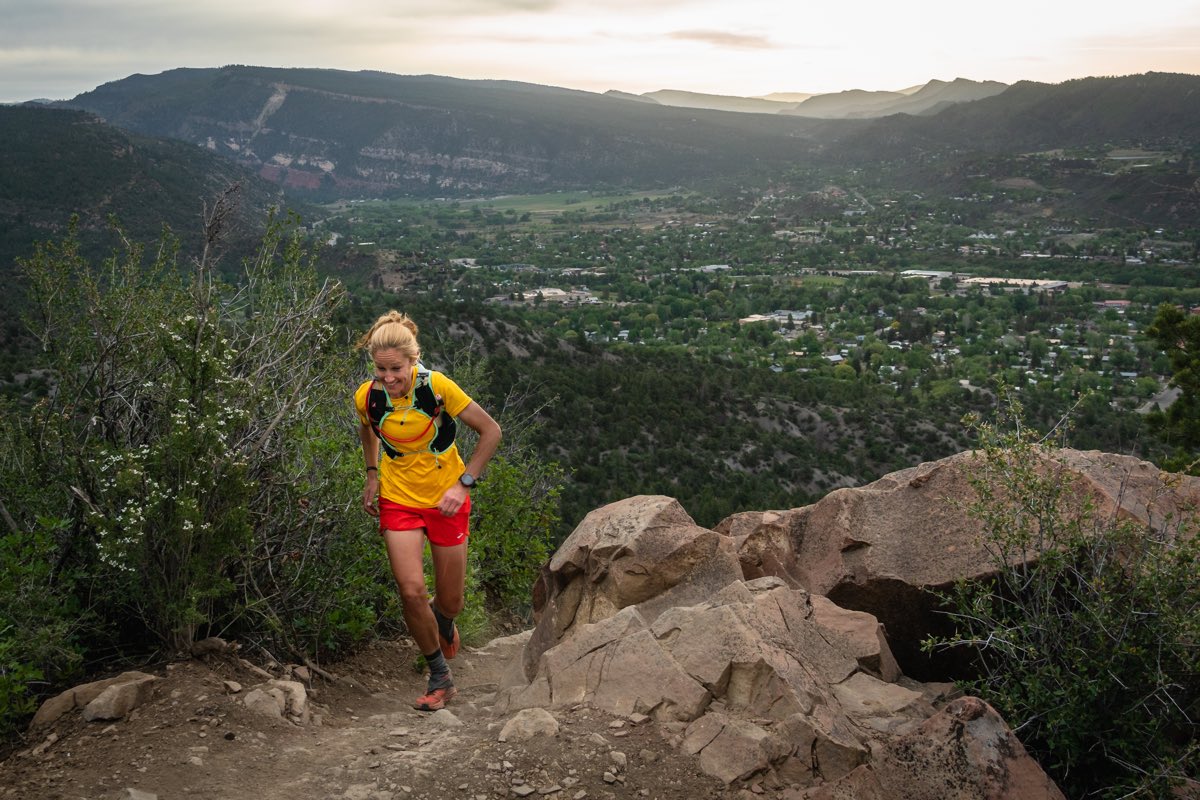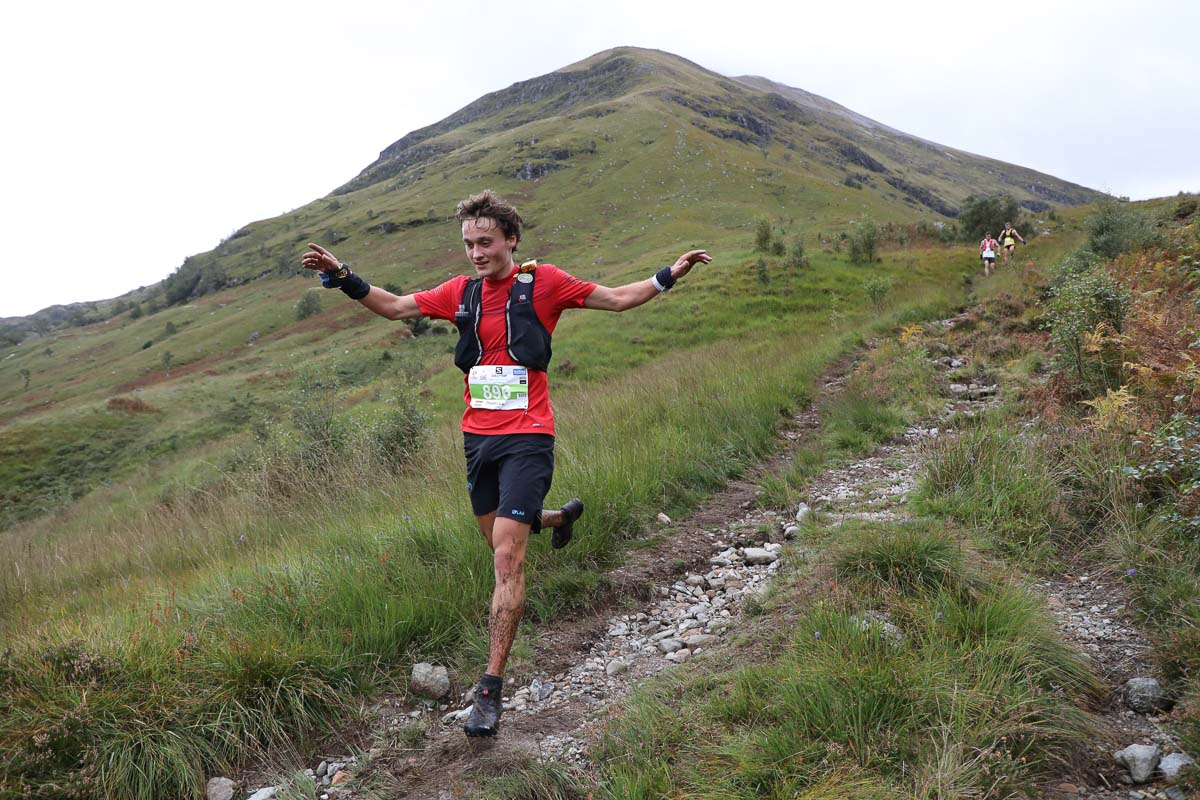The fourth and last category of workouts — we’ve already covered endurance-, stamina-, and speed-based workouts in past articles of this column — is sprint-based training. These workouts enhance the body’s ability to run very fast when the muscles are inundated with lactic acid and improve running economy by developing the coordination between the muscles and the nervous system.
Sprint-Based Workouts
The Workouts
Lactic acid tolerance sessions bring out your inner sprinter by teaching your body to recruit additional muscle fibers and become accustomed to that burning sensation in the muscles during all-out running. These fast intervals last between 30 seconds and a minute and are run at an effort you can sustain for two to six minutes. The recovery between repeats is relatively long — roughly two to five times the length of the hard running.
Neuromuscular strides are much shorter than lactic acid tolerance intervals. Lasting between 10 and 30 seconds, they teach us quick leg turnover without building lactic acid in the muscles. Recover fully after each stride. The pace is fast but not all out. In fact, you should feel no leg burning or be out of breath. The sole goal is to focus on proper running form. Start on soft, even, and flat terrain, and after several successful weeks, begin to add gentle rolling hills to improve your uphill and downhill running form and leg turnover.
Implementation
Lactic acid-clearing workouts are not necessary for the ultrarunner. It is rare that we are in situations where we must lean at the tape. However, neuromuscular training is key to efficient running. A stride workout of six to eight strides of 15 to 20 seconds each once or twice a week right after your easy or recovery runs will remind your body of what proper form should feel like without a hydration pack, water bottle, or waist pack throwing you off kilter. Strides will feel refreshing and recharge the legs a day or two after a long run.

The USA’s Geoff Burns beating Japan’s Nao Kazami to the line in a sprint finish while Italy’s Giorgio Calcaterra also approaches. These three men took fifth, sixth, and seventh at the 2018 IAU 100k World Championships. Photo: iRunFar/Bryon Powell
Uphill Workouts
Whether your race course is flat or mountainous, hill workouts are paramount. Hill work is one of the best all-around workouts. The heart and lungs are challenged, leg muscles are strengthened, turnover is improved, and, depending on the length of the hill, the ability to tolerate lactic acid accumulation and stamina is developed. If done properly, these low-impact workouts will leave you huffing and puffing, but your chances of injury are relatively low.
The Workouts
1. Short Hill Repeats
To improve your VO2 max, find a hill with a slope (6% to 15%) that takes 30 to 90 seconds to ascend. Run up at an effort equivalent to your 5-kilometer race pace for 60- to 90-second hills or slightly faster for 30- to 45-second repeats. Focus on good form with powerful pushoff and strong arm swing. Slowly jog down the hill to recover. Start with 4 to 6 repeats and build up to 12 to 14 reps.
2. Long Hill Repeats
Find a hill with a medium slope (6% to 10%) that takes 90 seconds to three minutes to ascend. Run up at an effort equivalent to your 10k to half-marathon race pace. Again, focus on good form with powerful pushoff and strong arm swing. Slowly jog down the hill to recover. Start with 3 to 4 repeats and build up to 10 to 12 reps. This workout will improve lactate threshold.
3. Long Rolling Hill Run
During a long, hilly run, approach each incline as a challenge. Regardless of the size, surge at 5k to marathon race effort to the top. Recover on the subsequent downhill and flat terrain. Adjust your pace and effort depending on the length and slope of each climb. This workout will not only increase your stamina but will also boost your confidence as your long runs grow in length.
4. Mountain Climbs
Find a trail or road that ascends for several miles and ideally gains between 300 to 1,000 feet per mile. Complete a total of 30 minutes to two hours of uphill running and hard hiking, steadily increasing your intensity as you approach the top of the climb. If no local paths fit this description, duplicate the climb on a treadmill or run repeats on a shorter hill. Trekking poles can be used during this workout.
5. Circuit Workout
This is an energizing combination of short hill repeats and neuromuscular strides. Run hard up the hill, jog for 30 to 45 seconds, run a 20- to 30-second stride on flat terrain, and then jog back down to the bottom of the hill to begin the circuit again. Optimally, you should end up with 4 to 6 hills and 4 to 6 strides.
Implementation
I suggest repeating these hill workouts several times per season and tracking your fitness progression. Notice if you’re traveling farther and faster on the same slope you started with before. Because we don’t all have access to optimal training grounds, we must work with what we’ve got. Bridge overpasses, parking garages, athletic fields, and treadmills will all do the trick if necessary.
Downhill Workouts
To the unprepared runner, long, steep descents can end the bid for a race finish or make it very difficult to be mobile afterward. Programming frequent downhill running sessions into your training schedule will prepare your quads for the thrashing they’ll take on race day.
The Workouts
1. Short Downhill Repeats
Find a hill with a medium slope (6% to 10%) that takes 1 to 2 minutes to descend. It is best to start on softer surfaces, such as smooth trail, grass, or dirt road. Stay away from rocky, technical trails for this workout. Like the uphill repeats, start with 4 to 6 and work up to 12 to 14 downhill repeats. Jog slowly or walk back to the top for recovery. You can also integrate this type of workout into a long run.
2. Long Downhill Descents
Long downhill descents should last anywhere from a quarter mile to 6 miles. The more sustained downhill there is, the better. The objective is to make your legs uncomfortable in training to minimize race-day soreness. Schedule a long downhill session at least once every 10 to 14 days during peak training. Muscle memory for this kind of work fades after roughly 2 to 3 weeks.
Implementation
If you’re new to downhill running, start gradually with several short downhill repeat workouts. Training your downhill muscles too aggressively or racing without proper preparation will prohibit you from being able to train comfortably for weeks and may cause injury.
Ultramarathon Predictor Workouts
One of the marathon’s most popular predictors of performance is the Yasso 800s Workout. Complete this workout as described, and you’ll have an idea of what you can achieve on race day. Predicting ultramarathon finishes are more complicated due to each event’s particular distance, terrain, weather, and the ups and downs you’ll feel over such a long race. However, running a dress rehearsal can provide insight into how race day might unfold.
Implementation
Perform your dress rehearsal 4 to 6 weeks before your goal race. Cover roughly 30 to 60% of your course’s distance. Mimic as many race variables as possible, including terrain, the equipment and nutrition you’ll use, and race day pacing. Ideally, complete this training run on the event’s course. Based on how you fare, extrapolate sensible race-day goals, rectify any equipment as well as nutritional or pacing errors, and test them again during the remaining long runs in the training cycle.
Call for Comments
- What sprint-based workouts do you include in your training? Do you do strides? How about brief, all-out pushes?
- How about hill workouts? What types of hill workouts are the easiest and hardest for you?
- Leave a comment to share if you do dress rehearsals for your races, be it during a training race or a regular run on your own.
References
- McMillan, Greg. “Running Physiology and the Four Training Zones.” McMillan Running Adult Camp. SpringHill Suites, Flagstaff, AZ. 11 May 2012. Lecture.
- McMillan, Greg. McMillan Running Company’s Online Coaching General Training Information Packet. Flagstaff, AZ: McMillan Running Company. Print.
- Torrence, Ian. “Mastering Hills, Part II: Descents.” Running Times Magazine. Running Times Magazine. 16 July 2012.
- Torrence, Ian. “Mastering Hills, Part I: Climbs.” Running Times Magazine. Running Times Magazine. 16 July 2012.
[Editor’s Note: As one of iRunFar’s best training articles, we’ve worked with author Ian Torrence to update this article before resharing it.]



